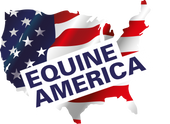Apple Lytes - not just table salt!

As the days are getting longer and competition season is starting, let’s talk more about the vital supplement electrolytes, to make sure you are ready for the Summer ahead!
Electrolytes play many key roles in the body, but especially muscle contraction and relaxation, the nervous system and maintaining fluid balance around cells. Electrolytes can be found in a typical diet, but as exercise or travel increases, especially in hot or humid conditions, the losses of water and electrolytes in sweat will also increase. At this point, the basic diet will not be sufficient to replace these losses, meaning electrolytes will need supplementing, to ensure hydration and optimum performance.
Horses have huge muscles that are capable of producing a lot of heat quickly, and they need to cool down. The main way this happens is through the skin and sweating. The horse’s body is covered in sweat glands meaning they can sweat a lot! Horses and humans sweat differently, with horse sweat being hypertonic (the sweat has a higher concentration of salt and other electrolytes that the horse’s blood). Once a sweaty horse dries, you can see the salt/ electrolytes left in their coat! It is important to remember these differences when comparing them to humans as this helps explain why it is so important to replace electrolytes in horses.
A horse in moderate work, trotting and cantering, can lose as much as 5-7 litres of fluid, and 50-70g electrolytes in an hour, and this will increase as the work intensity or duration increases, and even more if the weather is hot and humid!
A research paper by Zeyner et al. (2014) devised a sweat scoring system for horses to help estimate how much sweat has been lost. A summary of the table has been produced here:
|
Sweat Score |
Sweat Pattern |
Sweat Loss |
|
1 |
Area under the saddle partly dry, but partly dark, sticky and moist. The throat area is sticky and the flanks are darker than normal. |
1 – 4 litres |
|
2 |
Wet area under the saddle and throat. Small white areas at the edges of the saddle corners, and foaming may occur in friction surfaces e.g. between throat, reins and legs. |
4-7 litres |
|
3 |
Clear wet mark from bridle/ bit, often with foam on the backpiece and noseband). Throat and areas under saddle and girth consistently wet and flanks clearly wet. |
7-9 litres |
|
4 |
Throat and flanks completely wet, with moist, dark wrinkles above the eyes and pronounced foaming between the legs. |
9-12 litres |
|
5 |
Dripping fluid above the eyes and under the belly as well. |
12-18 litres |
Zeyner et al. (2014). Scoring of sweat losses in exercised horses – A pilot study. Journal of Animal Physiology and Animal Nutrition 98: 146-50.
Many of you may wonder why you can’t just use table salt (sodium chloride) to replace your horses’ electrolytes, after all it is cheap and easily available, and sodium and chloride are lost in large quantities in horse sweat. Yes, we definitely want to replace these, and the main ingredient in Apple Lytes is sodium chloride but that’s not all they contain! Apple Lytes also contain potassium, calcium and magnesium in a carefully balanced ratio formulated to help replace the electrolytes lost in horse sweat. If you neglect to replace the full range of lost electrolytes your horse could end up with depletions and suffer reduced neuromuscular function including muscle fasciculations, muscle cramping and thumps (diaphragmatic flutter).
What are the other benefits of Apple Lytes over table salt?
- Apple Lytes now come in 3 formulations with a new liquid solution alongside our popular Apple Lytes powder and paste!
- Apple Lytes are low sugar and highly palatable apple and cherry flavour, making it suitable for ALL horses and ponies, even those fussy eaters.
- Apple Lytes are BETA NOPS and UFAS accredited, ensuring they do not contain prohibited substances and are suitable for horses competing under FEI regulations and the Rules of Racing.
- The calculations are all done for you – just follow the serving rate on the tub to ensure lost electrolytes are replaced at the correct rate, to promote drinking and rehydration, whilst aiding recovery and maintaining optimum performance.

